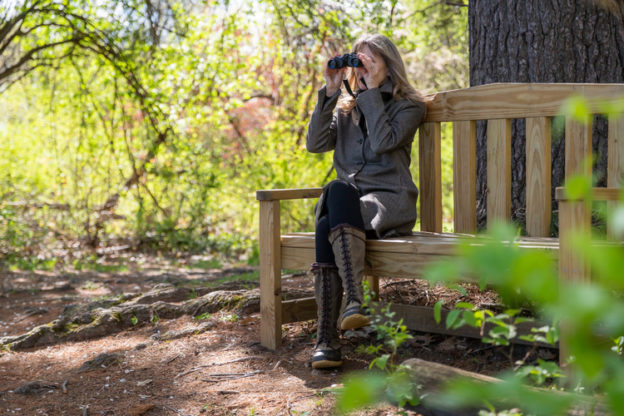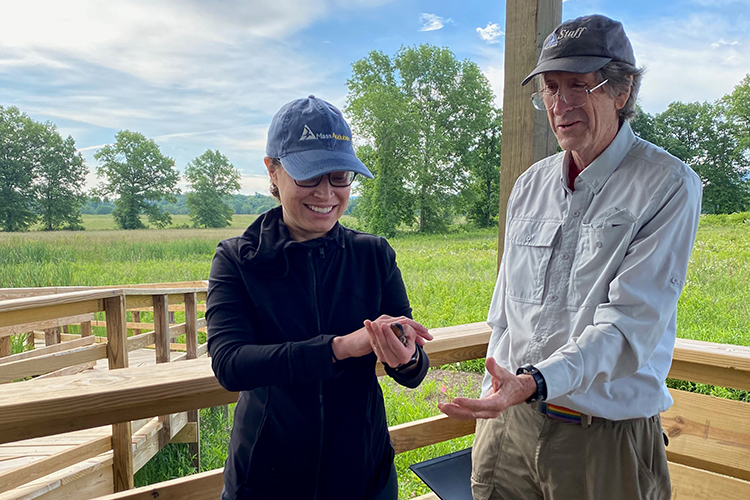Binoculars are simple, right? Look through one end, turn a nob at the top, and call it good? It’s actually a little more complex than that. Among other things, wildlife watchers need to consider magnification, weight, and field of view. Lucky for you, the Mass Audubon Shop has the low-down on everything related to optics.
Binoculars vs. Scopes
Birders use both binoculars and scopes, but there are some key differences. As the name binoculars suggest, binoculars have two objective lenses, one on the end of each barrel. Scopes, on the other hand, only have one objective lens. With one large lens, scopes typically capture more light, allowing you to see at higher magnifications and are more useful when looking across great distances. Binoculars are a great introduction to optics, as they are more portable, more affordable, and also provide crystal-clear vision.
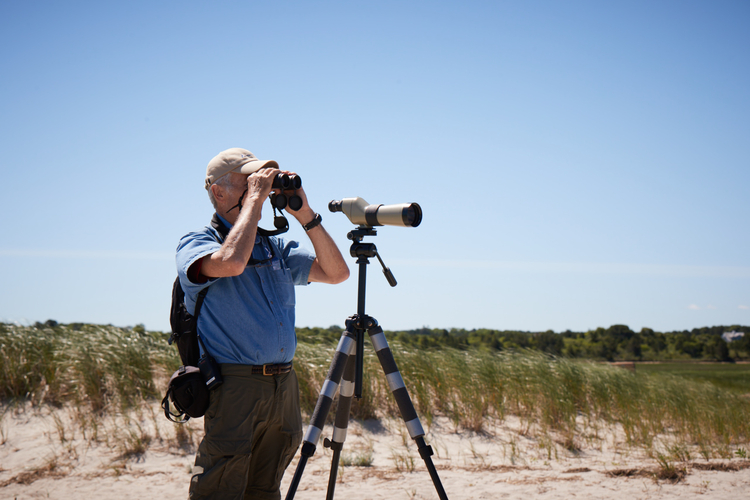
What to Look for in Binoculars
Every pair of binoculars is marked with a set of numbers, such as “8 x 42,” which refers to the magnification (8) of the binoculars and the diameter of the objective lens (42). The magnification used by most birders is usually between 7 and 10, but don’t make the mistake of thinking bigger is better. A lower magnification means you can see a wider field of view and it is easier to keep the image steady. A higher magnification sees more detail, but the field of view is reduced. If you are inexperienced in using binoculars, a wider field of view of an 8-power (vs. a 10) is more helpful when trying to locate a bird or animal in the distance.
The larger the objective lens, the more light can enter and, theoretically, the brighter the image should be. A larger objective lens also increases binocular size and weight—something to consider if you are hiking all day.
Using Your Binoculars
First, check to see if the eyecups are turned up or down (when binoculars come out of the box, eyecups are typically down). People with glasses should use their binoculars with the eye cups twisted down.
Once the eye cups are in the proper position for you, hold the left barrel steady and rotate the right barrel until you see one perfect circle of light through both eyes. Then, use the center focusing wheel to create a single, clear, crisp image.
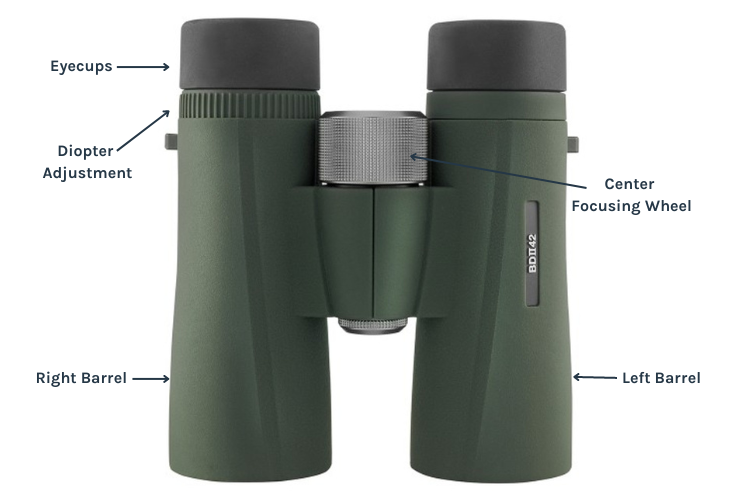
The Diopter Adjustment
Some binoculars have a diopter adjustment, an additional focusing tool typically used by people without glasses, and can be found as a ring on the right barrel. This adjustment accounts for any vision variances between your eyes and allows you to set the focus to accommodate the difference. There are a couple of ways to see if the diopter should be used—one of the most common procedures is doing a “triple check”.
- On the first check, look through both barrels at a stationary object and use the focusing wheel to sharpen the image.
- Next, cover the right barrel with your hand while keeping both eyes open. If the image is still clear with just the left barrel open, then do not adjust anything. If the image is fuzzy, readjust the focusing wheel.
- For the last and final check, cover the left barrel—if everything is clear on the right eye, do not adjust anything. If you need to sharpen the image, slightly turn the diopter adjustment until the image is crisp.
From there, do not turn the diopter ring—you will only need to use the main focusing wheel while exploring or viewing an object.
Cleaning Your Binocular Lenses
If you notice your lenses could use a cleaning, first blow across the lens surface or use a “cleaning pen” (which looks more like a paintbrush than a pen) to remove any dirt or debris that could scratch the lens.
Similar to cleaning a pair of reading glasses, lenses should be cleaned lightly with a microfiber cloth. It’s helpful to breathe on the lens before using the cloth. Never use Windex or other similar glass cleaning products on the lenses.
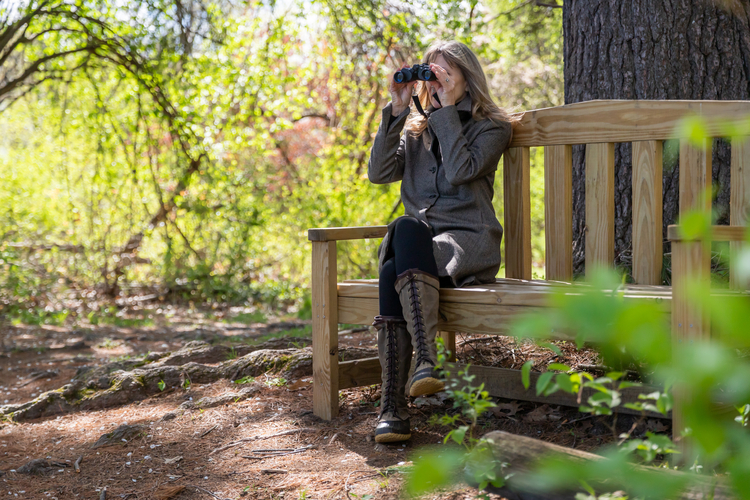
Buying the Right Binoculars
The best way to get an accurate feel for a pair of binoculars is by trying them out in person with our experts at the Mass Audubon Shop. We carry six different brands with varying magnifications, and members get a 10% discount. Plan your visit to the shop by going to shop.massaudubon.org/optics.


